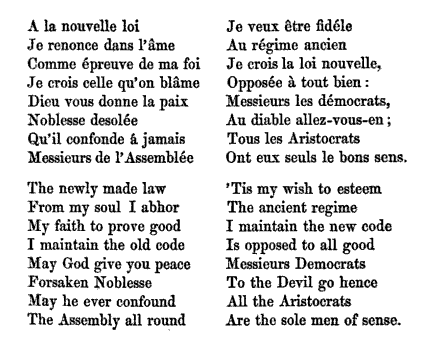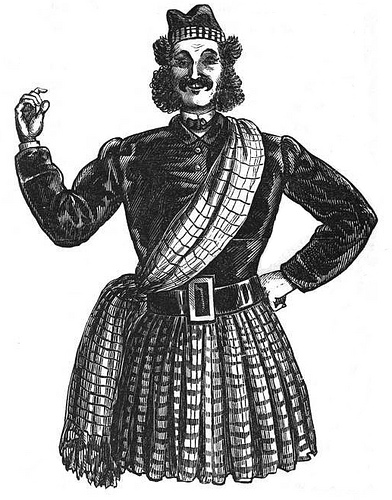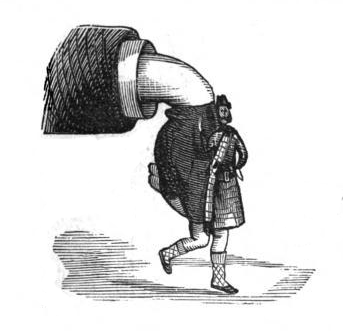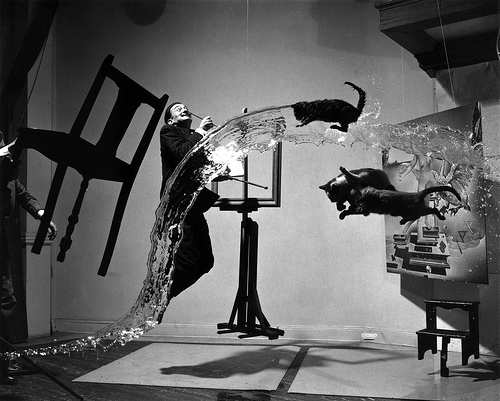At the start of the French revolution, a poet was asked what he thought of the new constitution. He replied with two stanzas:

To see what he really thought, read each line straight across.
(From Henry Benjamin Wheatley, Of Anagrams, 1862.)
At the start of the French revolution, a poet was asked what he thought of the new constitution. He replied with two stanzas:

To see what he really thought, read each line straight across.
(From Henry Benjamin Wheatley, Of Anagrams, 1862.)
THEIR ARE THREE MISTEAKS IN THIS SENTENCE.
Well, wait, there are only two. So there was a mistake of fact. Which means that the sentence really did contain three mistakes. But that means it was true all along … in which case it’s not false … in which case it really contains only two mistakes …
People born on Leap Day, February 29:
Sir James Wilson (1812-1880), premier of Tasmania, both entered and left the world on Leap Day. He died on his 68th birthday — or, arguably, on his 17th.

In February 1945, the British 14th Army had surrounded a mass of fleeing Japanese in a mangrove swamp in southern Burma. In the swamp were thousands of saltwater crocodiles, averaging 15 feet long, but the Japanese refused to surrender. The crisis came on the night of Feb. 19:
That night was the most horrible that any member of the [marine launch] crews ever experienced. The scattered rifle shots in the pitch black swamp punctured by the screams of wounded men crushed in the jaws of huge reptiles, and the blurred worrying sound of spinning crocodiles made a cacophony of hell that has rarely been duplicated on earth. At dawn the vultures arrived to clean up what the crocodiles had left. … Of about 1,000 Japanese soldiers that entered the swamps of Ramree, only about 20 were found alive.
That’s the account of naturalist Bruce Wright. If it’s accurate, this would be the worst crocodile attack — and indeed one of the deadliest animal attacks — in recorded history.
Some years ago, being with a camping party in the mountains, I returned from a solitary ramble to find every one engaged in a ferocious metaphysical dispute. The corpus of the dispute was a squirrel — a live squirrel supposed to be clinging to one side of a tree-trunk; while over against the tree’s opposite side a human being was imagined to stand. This human witness tries to get sight of the squirrel by moving rapidly round the tree, but no matter how fast he goes, the squirrel moves as fast in the opposite direction, and always keeps the tree between himself and the man, so that never a glimpse of him is caught. The resultant metaphysical problem now is this: Does the man go round the squirrel or not?
— William James, Pragmatism, 1907
Ernie and Bert are fishing. “I’ll bet you a dollar,” says Ernie, “that if you give me two dollars I’ll give you three dollars.”
Bert agrees and gives Ernie two dollars. Ernie says, “I lose,” returns one dollar and pockets the other.
Ernie goes on to found a successful software company and Bert dies a bitter alcoholic.

A do-it-yourself dancing highlander, from Frank Bellew’s The Art of Amusing (1866). Cut him out, stitch him to a glove, and make little socks for your fingers.

“You move about the fingers, simulating a man dancing the Highland-fling or double-shuffle, and the result will be very curious and eminently satisfactory.”
Here’s an achievement — in 1936 Buckminster Fuller explained Einstein’s theory of relativity in a telegram:
EINSTEIN’S FORMULA DETERMINATION INDIVIDUAL SPECIFICS RELATIVITY READS QUOTE ENERGY EQUALS MASS TIMES THE SPEED OF LIGHT SQUARED UNQUOTE SPEED OF LIGHT IDENTICAL SPEED ALL RADIATION COSMIC GAMMA X ULTRA VIOLET INFRA RED RAYS ETCETERA ONE HUNDRED EIGHTY SIX THOUSAND MILES PER SECOND WHICH SQUARED IS TOP OR PERFECT SPEED GIVING SCIENCE A FINITE VALUE FOR BASIC FACTOR IN MOTION UNIVERSE STOP SPEED OF RADIANT ENERGY BEING DIRECTIONAL OUTWARD ALL DIRECTIONS EXPANDING WAVE SURFACE DIAMETRIC POLAR SPEED AWAY FROM SELF IS TWICE SPEED IN ONE DIRECTION AND SPEED OF VOLUME INCREASE IS SQUARE OF SPEED IN ONE DIRECTION APPROXIMATELY THIRTY FIVE BILLION VOLUMETRIC MILES PER SECOND STOP FORMULA IS WRITTEN QUOTE LETTER E FOLLOWED CLOSELY BY EQUATION MARK FOLLOWED BY LETTER M FOLLOWED BY LETTER C FOLLOWED CLOSELY BY ELEVATED SMALL FIGURE TWO SYMBOL OF SQUARING UNQUOTE ONLY VARIABLE IN FORMULA IS SPECIFIC MASS SPEED IS A UNIT OF RATE WHICH IS AN INTEGRATED RATIO OF BOTH TIME AND SPACE AND NO GREATER RATE OF SPEED THAN THAT PROVIDED BY ITS CAUSE WHICH IS PURE ENERGY LATENT OR RADIANT IS ATTAINABLE STOP THE FORMULA THEREFORE PROVIDES A UNIT AND A RATE OF PERFECTION TO WHICH THE RELATIVE IMPERFECTION OF INEFFICIENCY OF ENERGY RELEASE IN RADIANT OR CONFINED DIRECTION OF ALL TEMPORAL SPACE PHENOMENA MAY BE COMPARED BY ACTUAL CALCULATION STOP SIGNIFICANCE STOP SPECIFIC QUALITY OF ANIMATES IS CONTROL WILLFUL OR OTHERWISE OF RATE AND DIRECTION ENERGY RELEASE AND APPLICATION NOT ONLY OF SELF MECHANISM BUT OF FROM SELF MACHINE DIVIDED MECHANISMS AND RELATIVITY OF ALL ANIMATES AND INANIMATES IS POTENTIAL OF ESTABLISHMENT THROUGH EINSTEIN FORMULA
The artist Isamu Noguchi was working on a commemorative sculpture in Mexico and had forgotten the precise formula E=mc2. Fuller not only described the formula but explained it — in 264 words.
04/22/2019 UPDATE: In 2009 artist Elisabetta Benassi reproduced the telegram in a carpet.

“There is only one difference between a madman and me. I am not mad.” — Salvador Dali
Two problems that will make you want to throw a chair at someone, from John Jackson, Rational Amusements for Winter Evenings, 1821:
I.
If from six ye take nine, and from nine ye take ten
(Ye youths, now the mystery explain;)
And if fifty from forty be taken, there then,
Shall just half a dozen remain.
II.
One third of twelve, if you divide,
By just one fifth of seven,
The true result (it has been tried,)
Exactly is eleven.
How? Why?